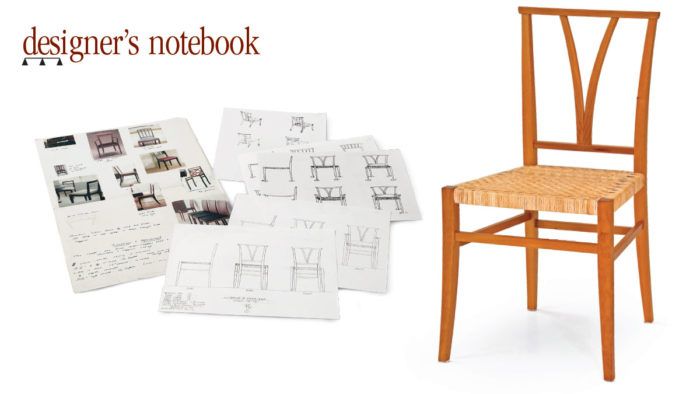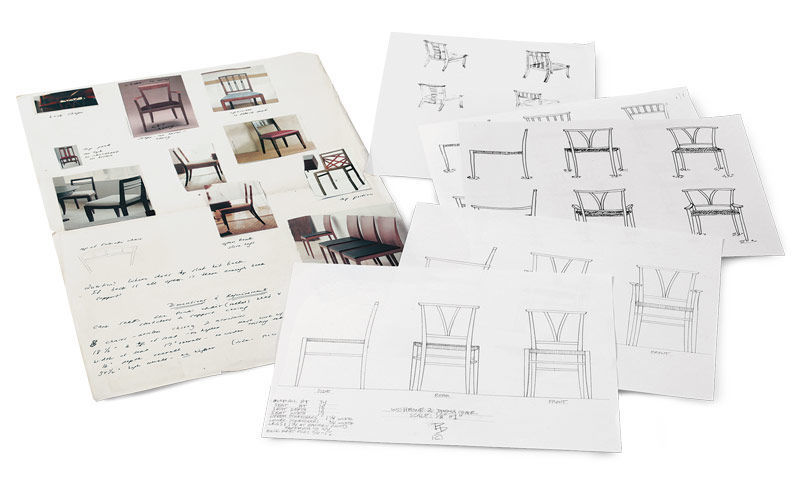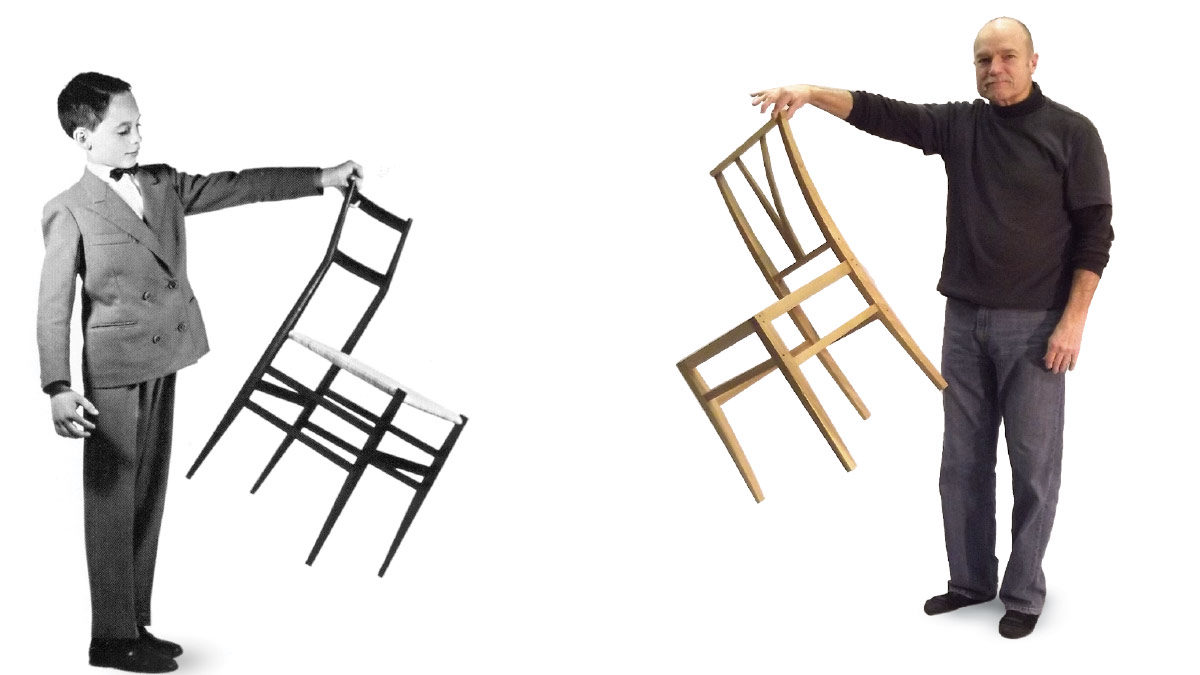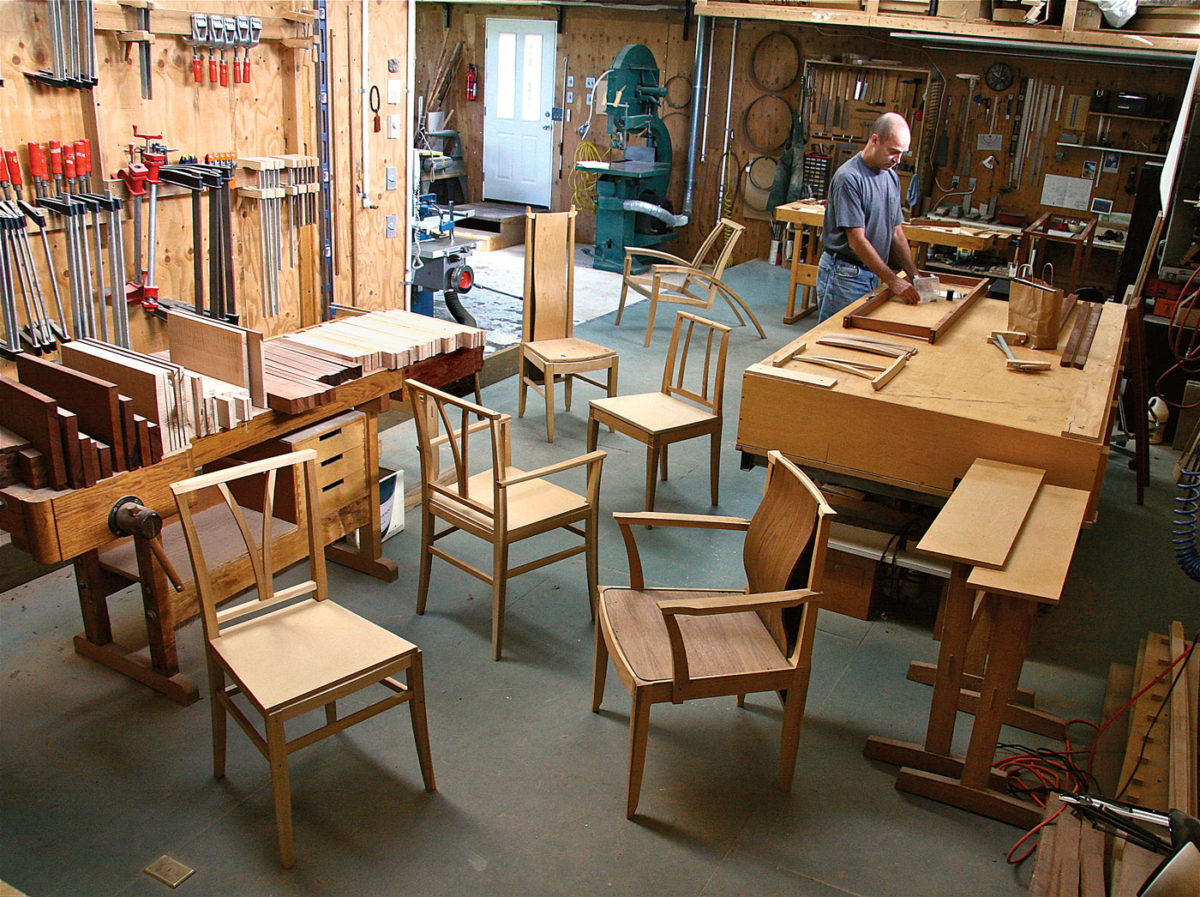Redesigning a Classic Side Chair
How to reproduce an original design without making an exact replica.

Synopsis: Commissioned to design a minimalist dining chair for a set of eight, Ross Day took his inspiration from a classic, Gio Ponti’s Superleggera chair. The challenge was whether he could build his own version of wood—Ponti’s was metal—and keep it as light as the original. Of course, the goal also was to create something new that was an homage to, not a copy of, the inspiration.
For this chair, Wishbone 2, my client wanted eight chairs to match a minimalist dining table. My design was sparked by a chair she had in the house—a chrome and caned-seat version of Italian architect Gio Ponti’s classic Superleggera chair. I set out to make my own attempt at a very light, strong chair.
The minimalism of the original chair is its most important feature. To carry this concept into the new chair, the individual pieces needed to be narrow and thin, yet the nature of the materials had to be considered and respected. I had to solve the inherent construction challenges with just the right joinery techniques to make the chair attractive and still able to stand the test of time.

Merging the streamlined design of my chair with the appropriate construction was not easy. The client wanted the cherry frame members to be as thin as the metal version of Superleggera. Corner joints in welded steel at 3⁄4 in. dia. are one thing, but wood is an entirely different matter. I wanted to push the limits of wood as a material a little bit, but not beyond capacity.

Frankly, I had structural concerns about the wood version of the Superleggera, specifically around the seat. In each corner the top stretchers came into a very thin leg, leaving virtually no room for joinery. And what joinery there was posed a short-grain problem at the top of the front legs. Of course, the Superleggera’s multiple lower stretchers were meant to pick up that load, but in my design I wanted fewer low stretchers. So I needed to somehow beef up the joinery around the seat to maintain structural integrity without compromising the chair’s physical and visual lightness.
Deciding to cane the seat helped resolve these issues. Because caning is a wrapped seat covering, it allowed me to add some heftier corner joinery around the seat. It concealed thick stretchers that allowed me to offset deep tenons front to back where most of the stress occurs. I also put double tenons in each corner. This joinery combination along with some corner blocks alleviated my structural concerns. I was also pleased with the caning’s texture and color, which complements the cherry. And weaving the caning in a herringbone pattern adds geometric visual interest.
For the back rest, I added another influence, a wishbone shape à la Hans Wegner. I did a three-ply bent-lamination, once again strong and light. By keeping track of the sequence of the sawn veneers, I was able to make sure the lamination gluelines were insignificant.
The Superleggera chair inspired me to design very light and strong chairs, with my own signature, that are used and loved every day. □
Ross Day is a furniture maker in Poulsbo, Wash.
More on FineWoodworking.com:
- Designer’s Notebook: Mike Korsak’s En Pointe – Mockup leads to a masterful piece
- Designer’s Notebook: John Reed Fox – Design, slowed down
- Designer’s Notebook: Peter Galbert – Stretching the Windsor Tradition

Fine Woodworking Recommended Products

Dividers

Blackwing Pencils

Circle Guide







Comments
Great
Log in or create an account to post a comment.
Sign up Log in